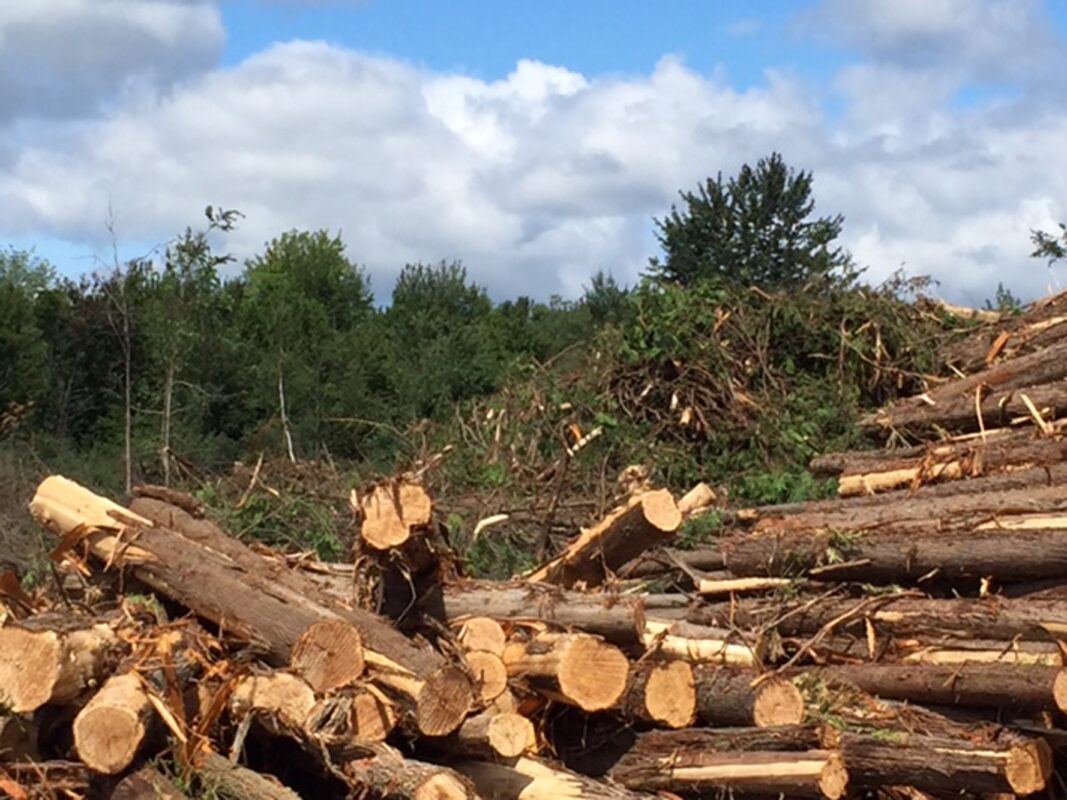
At an information session on December 12, 2017, Richcraft presented high level concepts for the development of Area 2, an urban expansion study area brought in by Official Plan Amendment 76 (OPA76), as confirmed by an OMB decision in 2013 following extensive appeals.
Coming out of the previous information session on this project in December 2015, the feeling was that there was very little developable land on this parcel once the Carp river floodplain, environmentally protected areas and species at risk habitat were taken into account. In addition, the existing conditions report presented by the proponent’s consultants at the time were widely panned as being almost comically inaccurate and incomplete. So, it was quite a surprise to see the high level concept presented yesterday, which calls for around 600 new residential units on 40 hectares squeezed into a narrow finger of land between the South March highlands to the north and the Carp river to the south.
When asked to explain how they got from 0 hectares to 40 hectares of developable land over this time span, the explanation came down to how the species at risk constraint would be dealt with. The whole area is recognized as Category 3 Blanding’s turtle habitat. The City representatives at the information session explained that under the 2005 Provincial Policy Statement, this would have meant no development within 250 meters, essentially wiping out all of the developable area. However, under the 2014 PPS, development can proceed in such an area if the Ministry of Natural Resources can be convinced to issue an Overall Benefit Permit. Getting such a permit requires a lot of work on the part of the proponent, but from what we have observed over the last few years, these permits are handed out by the Minister almost without exception on every application. This is a permit to kill, injure or maim (these are the actual words on the permit) an endangered species, so long as you provide some form of mitigation and compensation, things like building new nesting sites and putting up exclusion fences. The Environmental Commissioner of Ontario has just issued a report on the ineffectiveness of this species at risk regime.
We also learned that there are discussions between proponents and the Ministry about the likelihood of permits being issued even before an application is filed, and that, in this case, it seems the Ministry has indicated that there is a strong enough likelihood that a permit can be issued for Richcraft to proceed with their plans.
During the Q&A, many community members, including the GA member present, asked about the vintage of the floodplain mapping used for the concept plan. The consultant could not say, only stating that the maps were the most recent available. Community members in attendance, who are on the Board of the Mississippi Valley Conservation Authority, the CA responsible for floodplain mapping for the Carp River, pointed out that the current maps for the reach of the river that goes through Area 2 date from 1983. New floodplain mapping is planned for 2021. This put in doubt the validity of the concept plan presented as there is a widely held expectation that the 100 year flood line is now almost certainly higher than in 1983, with extensive growth of impermeable surfaces upstream due to development since then and the higher incidence of weather extremes observed in recent decades.
In reply to a question from the GA Chair Paul Johanis, the city planner indicated that the Existing Conditions Report that had been so badly received in 2015 had been extensively updated and that the revised version would be posted on the City’s website.
The city planner took a fairly fatalistic approach to the exercise, stating that there was no choice but to proceed with developing this property as it had been identified as an urban expansion study area in the OPA 76 process, and confirmed as such by the OMB.
In his remarks, Paul Johanis asked whether consideration could be given to another development approach altogether. There is extensive development underway or planned all around this area. Directly across Terry Fox Drive from Area 2, Richcraft has another development application on the go; the KNL lands, over 100 hectares of new development, adjoin this Richcraft property to the north and east; and just to the south, the final phase of the Regional Group’s Richardson Ridge development is underway. Because of the highland terrain, mostly bedrock and wetlands, storing and draining storm water from these developments is proving to be quite a challenge. This challenge is being solved in a piece meal fashion, however, with each developer proceeding with their own plans, which in some cases threaten what greenspace remains in these area. Paul suggested that there is perhaps an opportunity to develop a master servicing plan for the whole area, in which Area 2 could be developed as a large piece of green infrastructure providing storm water management services to all of these developments. Area resident and Ottawa Stewardship Chair, Janet Mason, added that such an approach would provide an opportunity to undertake the restoration of this reach of the Carp River, extending the work done upstream as part of the Carp River Restoration Project.
There are many reasons for opposing the construction of an isolated residential development on the west side of Terry Fox Drive, in a sensitive environmental area, acting as a harbinger for eventual urban expansion to Huntmar Rd and beyond. This could be a way to yet hold the line.
*****
For slides presented at the first public meeting, held on June 16, 2015, please go here.
